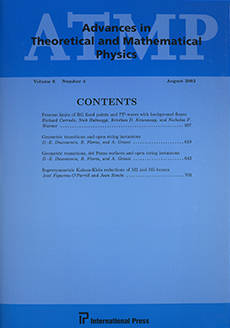Abstract
The basic properties of the Temperley-Lieb algebra $\mathsf{TL}_n$ with parameter $\beta = q + q^{-1} , q \in \mathbb{C} \backslash \{ 0 \}$, are reviewed in a pedagogical way. The link and standard (cell) modules that appear in numerous physical applications are defined and a natural bilinear form on the standard modules is used to characterise their maximal submodules. When this bilinear form has a non-trivial radical, some of the standard modules are reducible and $\mathsf{TL}_n$ is non-semisimple. This happens only when $q$ is a root of unity. Use of restriction and induction allows for a finer description of the structure of the standard modules. Finally, a particular central element $F_n \in \mathsf{TL}_n$ is studied; its action is shown to be non-diagonalisable on certain indecomposable modules and this leads to a proof that the radicals of the standard modules are irreducible.Moreover, the space of homomorphisms between standard modules is completely determined. The principal indecomposable modules are then computed concretely in terms of standard modules and their inductions. Examples are provided throughout and the delicate case $\beta = 0$, that plays an important role in physical models, is studied systematically.
Citation
David Ridout. Yvan Saint-Aubin. "Standard modules, induction and the structure of the Temperley-Lieb algebra." Adv. Theor. Math. Phys. 18 (5) 957 - 1041, October 2014.
Information





